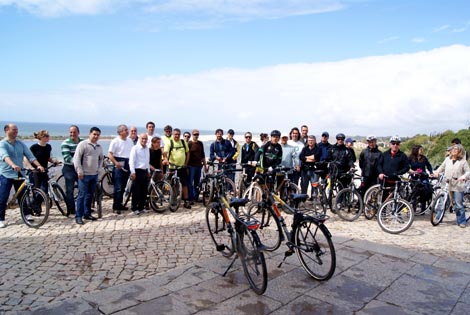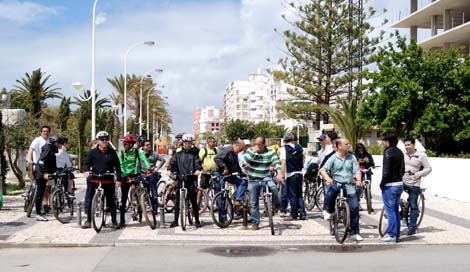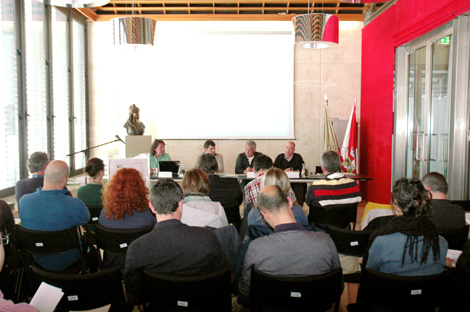 The first crossing of the Ecovia do Litoral, which ended this Thursday, in Vila Real de Santo António, identified the need to reinforce the signage, replacing the material (panels, plaques and landmarks) that has been the target of vandalism or theft.
The first crossing of the Ecovia do Litoral, which ended this Thursday, in Vila Real de Santo António, identified the need to reinforce the signage, replacing the material (panels, plaques and landmarks) that has been the target of vandalism or theft.
This crossing was an initiative that involved technicians and project managers, taking 40 people to cycle through the final sector between Tavira and VRSA.
The tour began in February, in the municipality of Vila do Bispo, and covered, over four months, the entire route of this cycle route that crosses the 12 municipalities of the Algarve, making a diagnosis of the condition of the road.
After the early hours of Thursday morning were used to cover the trails of Tavira, Castro Marim and VRSA, the Salão Nobre of the municipality of Vila Reale received a conference aimed at surveying the strengths and weaknesses of the entire region. inspection crossing.
During the debate, representatives of the 12 municipalities involved in the Ecovia section left suggestions to increase demand for that infrastructure and the comfort and safety of users and highlighted the importance of carrying out this type of diagnosis annually.
In the field of priorities, it was identified the need to requalify the signage along the entire road, replacing the material (panels, signs and landmarks) that have been the target of vandalism or theft.
 According to the coordinator of the Ecovia project, Jorge Coelho, the solution for local authorities to solve the problem in a fast and inexpensive way can be through the «placement of low-cost signage», using marking systems similar to those used on pedestrian routes.
According to the coordinator of the Ecovia project, Jorge Coelho, the solution for local authorities to solve the problem in a fast and inexpensive way can be through the «placement of low-cost signage», using marking systems similar to those used on pedestrian routes.
Also present at the conference, José Carlos Barros, deputy mayor of Vila Real de Santo António, highlighted the need to rethink the signage of urban sections of the Ecovia (usually characterized by a blue line or pictograms) and to articulate it with others cycling networks, “increasing their density”.
“In VRSA, as in other municipalities, bicycles must be seen as an integral part of the economic and tourist development strategy of the localities. In fact, it is for this reason that Ecovia should be understood as a project under permanent construction», notes the person also responsible for the environment portfolio.
At the closing of the session, representatives of the Algarve Regional Tourism Authority (ERTA), the Algarve Intermunicipal Community (Amal) and the Algarve Regional Coordination and Development Commission (CCDR) were present, who, in unison, appealed for the project. Ecovia, already a decade old, is not held back by the economic constraints of public and private entities.
What is Ecovia
 The Ecovia do Litoral runs along the entire coast of the Algarve, in an extension of 214 kilometers, from Cabo de S. Vicente (Vila do Bispo) – kilometer zero – to Vila Real de Santo António.
The Ecovia do Litoral runs along the entire coast of the Algarve, in an extension of 214 kilometers, from Cabo de S. Vicente (Vila do Bispo) – kilometer zero – to Vila Real de Santo António.
The development of the project is the result of a partnership between the Algarve Intermunicipal Community (Amal), the Algarve Regional Coordination and Development Commission (CCDR) and the Nature and Biodiversity Conservation Institute (ICNB) – Ria Formosa Natural Park.
VRSA cycling routes
In Vila Real de Santo António, 30 kilometers of cycle paths were built in four years, routes that include the Ecovia do Litoral route.
The county's cycle paths have shown considerable use, mainly on the Ecovia route, in the Manta Rota/Ribeira do Álamo area, and in Monte Gordo, on the routes in the interior of the Forest and on the former EN 125.


















Comments